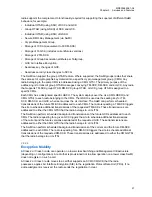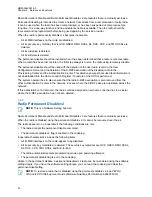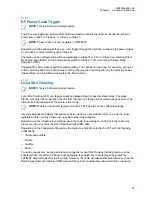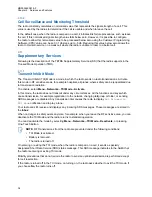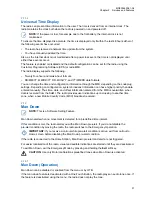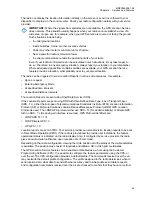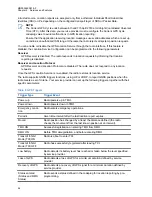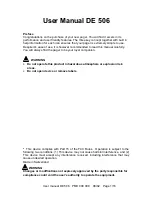
If the SwMI denies the registration request due to the location area rejection, the radio does not
attempt to register again at this cell until the next power-on. The radio supports the modification
of its subscriber class on receipt of a new subscriber class from the SwMI in the registration
acknowledgment PDU. This subscriber class is used until turning off the radio or next Individual
TETRA Subscriber Identity (ITSI) attach.
The radio does not send registration signaling when one of the following occurs:
• Roaming and registration fail before the radio receives the random access acknowledgment and the
radio goes back to the last serving cell.
• The radio discovers a link failure on the serving cell, the link failure is shorter than the predefined
timer and the radio is not in the transmit inhibit mode.
• The radio discovers a link failure on the serving cell and is in the transmit inhibit mode. In this case,
the radio always goes back to the serving cell without registration and stays in the transmit inhibit
mode until the mode is turned off.
NOTE:
When two or more scenarios occur at the same time, the radio registers with signaling.
If the radio discovers a link failure on the serving cell, a specific timer starts counting. If the link
failure remains after the timer expires, then the radio acts as during a normal link failure. If the link
failure ends before timer expires, then the radio goes back to the serving cell without registration. This
mechanism ensures that unnecessary registration is avoided.
When a radio is out of the serving cell range for a period shorter than configured in the codeplug, then
the radio does not register to go back in the range.
2.10.5
Congested Cell Handling
This feature is used only during initial registration and when roaming between sites. It is not used when
camped on a site that has become busy or congested due to no free traffic channel to make or receive
calls.
When the cell that the terminal is trying to register is congested, a special level-based algorithm is in
the place. Depending on the level of congestion, the terminal is waiting for the registration or is rejected
on that cell.
The terminal recognizes whether the cell is congested (Control Channel Congestion). The terminal
tries to roam to not congested cells first, ranking congested ones as secondary. The cell congestion is
one of the service level criteria.
The following cells are never marked as congested.
• Last suitable cell - if there are no other suitable cells during roaming or initial cell selection.
• Serving cell.
The feature is configurable using the Customer Programming Software (CPS).
2.10.6
Subscriber Class
When the radio powers up, or whenever it performs registration or roaming, it always uses its
provisioned Subscriber Class (SC).
When the radio registers on a cell that does not support any of its SCs, it is active only in services that
have the emergency priority.
MN003465A01-AF
Chapter 2 : Services and Features
34








